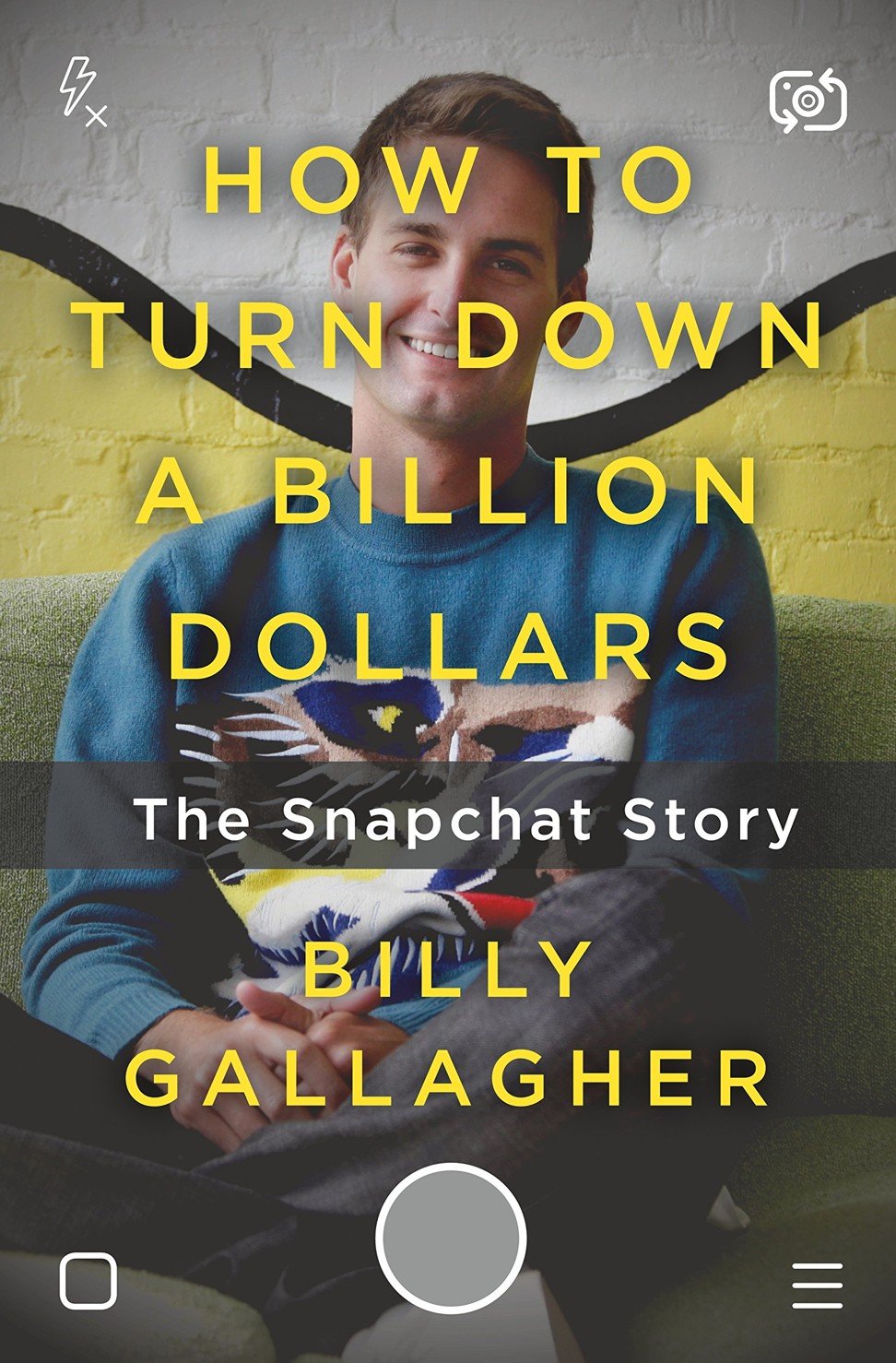
Snapchat’s rise from obscure app to Facebook rival charted in How To Turn Down A Billion Dollars
Author Billy Gallagher tells how CEO Evan Spiegel invented the social app while at Stanford University, then rejected Facebook’s multibillion-dollar acquisition offer in 2013, and recounts Snapchat’s rocky expansion to an IPO

by Billy Gallagher
St Martin’s Press
3 stars
Snapchat is the great dividing line in the social media ecosystem: the old, with their fuddy-duddy Facebook, don’t understand it and do not use it; the young, with their selfies and sexting, have taken to it with alacrity, their daily usage figures far exceeding that of any other app.
Yet its entire communication model goes against the grain of what every other social app had employed until then. It is predicated on ephemerality: where Facebook, Instagram, LinkedIn and Twitter curate your online identity, leaving a permanent record of how you present yourself, Snapchat sends pictures (or, more recently, videos or text messages) which disappear after being viewed, allowing interaction to be less portentous, more transitory. Also, Snapchat makes it less easy to find other users – there are no follow suggestions, or reposts of content, making it very much a private network.
In How To Turn Down A Billion Dollars, Billy Gallagher tells the story of this remarkable app. The book is strongest in its traditional areas, on business and personal relationships. It is largely structured in three sections: the founders (particularly Evan Spiegel) at Stanford, and then alternating discussions of Snapchat’s development of its app and business.

Spiegel’s behaviour at work is less admirable. He is difficult, mercurial and impulsive. Initiatives are scrapped as soon as the data turns bad, with no thought of whether things could be turned around. Some are stopped even when popular (such as sticker sales), because Snapchat finds them insufficiently profitable. It might make strict business sense, but the merciless approach belies Spiegel’s talk of “having fun” and “making cool stuff” as his primary goals.
The story of Snapchat is fundamentally similar to that of many internet firms. The founders, Spiegel, Reggie Brown and Bobby Murphy, met at an elite university (in this case Stanford, the alma mater of the founders of Facebook, Google, Instagram, PayPal, and Netflix), started something which proved highly popular, acquired investors, and then took the company to an IPO after surmounting the initial bumps of high-octane expansion. There’s an ousted partner, as with Facebook’s lawsuits with Eduardo Saverin and the Winkelvoss twins, issues regarding security and data protection, and, all the while, turbo-charged growth.

But Gallagher is insistent on Snapchat’s importance and uniqueness. He may have been right in several ways – very few start-ups would turn down an offer of US$3 billion, even fewer have survived a straight fight with Facebook, and the notion of ephemeral communication turned social apps on their head – yet perhaps, in the larger sense, maybe not.
His attempts to convey Snapchat’s functions and their development (geotagging, stickers, bitmojis and advertising) come across at best as trifling, and feel like an attempt to lend gravitas to something rather inconsequential – both in the app’s capabilities and in the company itself, which may or may not turn out to be something trivial.
Gallagher tells the story of Snapchat on the whole adroitly, but with some fundamental errors. Most critically, he fails to distinguish between Spiegel and Snapchat: too often he talks of what Evan does, thinks and feels, without regard to the rest of the company. It simplifies the story, but elides the contributions of too many.
This might be, you sense, to Spiegel’s taste – he is very much a follower of Steve Jobs, who helped return the CEO to the heroic individual, alongside Rockefeller and Carnegie. But the portrait Gallagher paints is hagiographic. When he writes, “[Spiegel] doesn’t merely want Snapchat to be a great technology start-up. Nor will being a great technology company satisfy his ambition. He simply wants to be great. Period”, this does not convince the reader of his critical distance.

Similarly, Gallagher’s estimation of the importance of Snapchat seems more in line with a PR statement than a serious evaluation.